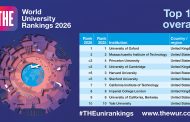The universities have remained shut across Nigeria for nearly a year now, courtesy of Covid-19 and a paralysing strike action by the Academic Staff Union of Universities, (ASUU). Just as the ASUU dimension was eventually out of the way and everyone else was warming up for a return to the campuses, Covid-19 reinforced and returned. It is a naughty nightmare for a least prepared nation for such a nightmare.
Keeping the universities under lock much further has just too many implications, some of which can be seen and are already being felt, many of which nobody can see yet till much, much later in the life of the nation.
Yet, opening the universities can be such a risky option, given the infrastructural state of the campuses and the prevailing attitude to the pandemic. From the initial doubt about its capacity to take life, Covid-19 has brought home the message that it is the ultimate nightmare. Unlike before, this is the reckoning with it now, right down to the villages.
In one village somewhere in Benue State under two weeks ago, an entire village migrated into the bush when it leaked that some guys brought home a Covid-19 victim in an all-night journey from Abuja to bury. Somehow, their plan to arrive and be done with the burial latest by 5 a.m failed. By the time they got into the village in question two hours late, it had become common knowledge that a team was arriving the village with a Covid dead body. That is the extreme of reckoning with Covid-19 now, a remarkable swing from around March – October 2020.
Hence the big dilemma: keep the universities shut and court imponderable risks Or re-open them and court even an even more risky outcomes in the context of dilapidated, dysfunctional infrastructural profile of the universities, particularly the public universities. In the confusion, some university administrators are adopting the typical bravado of announcing resumption dates, posing and pretending that they can brave it. Some few privately owned have smartly mastered migrating online to keep the calendar safe from disruption. But only very few can or have been able to do this yet, with nearly no prospects for the big public universities to join and make a success of it.
It is impossible talking about the infrastructural deficit in the universities across Nigeria without wondering how that could be possible for a country that talks endlessly and noisily about being the giant in Africa. How can such a quantitative sense of being a giant work in today’s digital world? What does it take to have 21st century universities if that is the number one requirement for global leadership ever?
Perhaps this is the moment. Stand down Julius Berger (or if anyone can find alternative construction companies for emergency performance of this magnitude) to build specific facilities in ALL the universities within a stipulated number of weeks, complete with Covid-19 compliant appurtenances. In other words, apply the approach Obasanjo applied in readying the MKO Abiola Stadium in Abuja. How long did it take Berger to put in place? It was few months and they were paid nothing for that to happen. Payment followed later. If there can be a justification for an emergency approach to a stadium, why can there not be one for this nightmare?
This is so that, by March 2021, Covid-19 would have paradoxically forced Nigeria from 12th century cowsheds to 21st century universities. Then the next phase of the challenge would be how to subsequently fabricate 21st century academics to match the 21st facilities. Fabricating 21st academics is the easier one because the academics are already there. They have only decided to relax because they discovered that the country itself has no place for education in its consciousness. Perhaps this rapid modernisation strategy will jolt the few ones lost in theoretical and methodological antiquity.
A nation is all about the imaginative capacity to convert disadvantage into advantage. Can there be any better such opportunity than ONE!




























